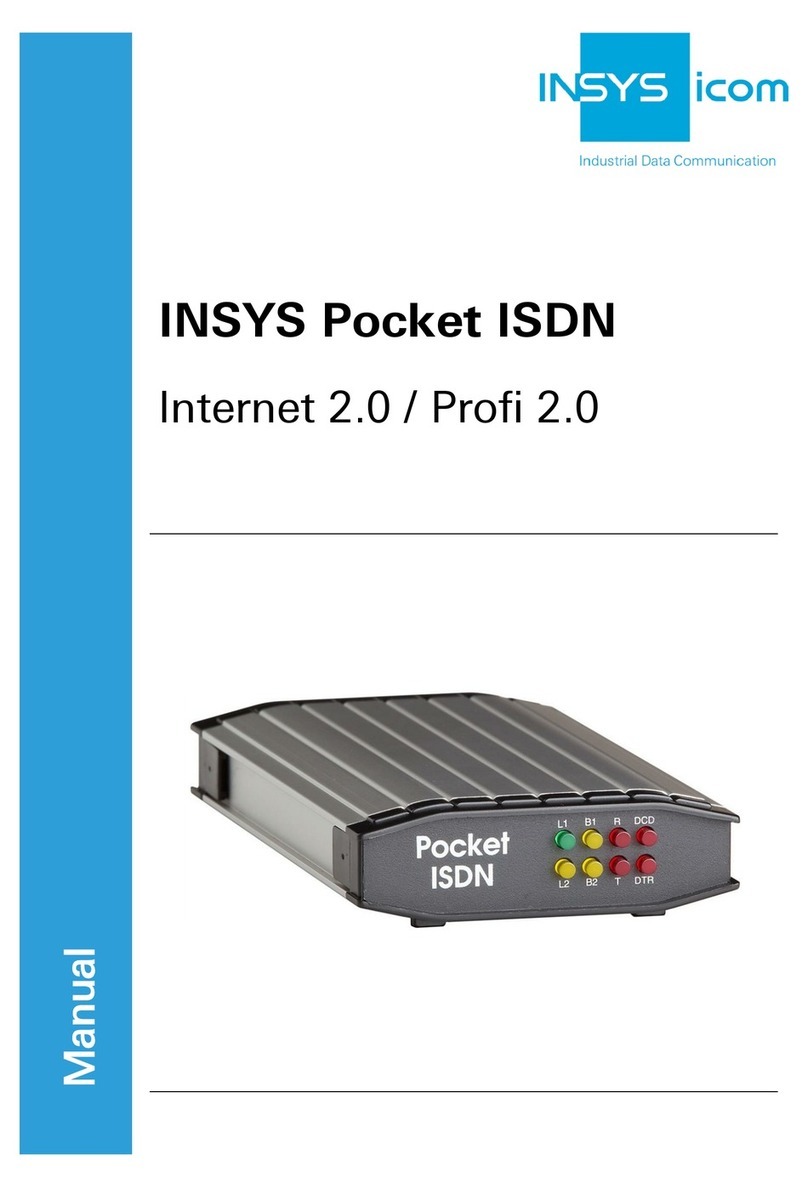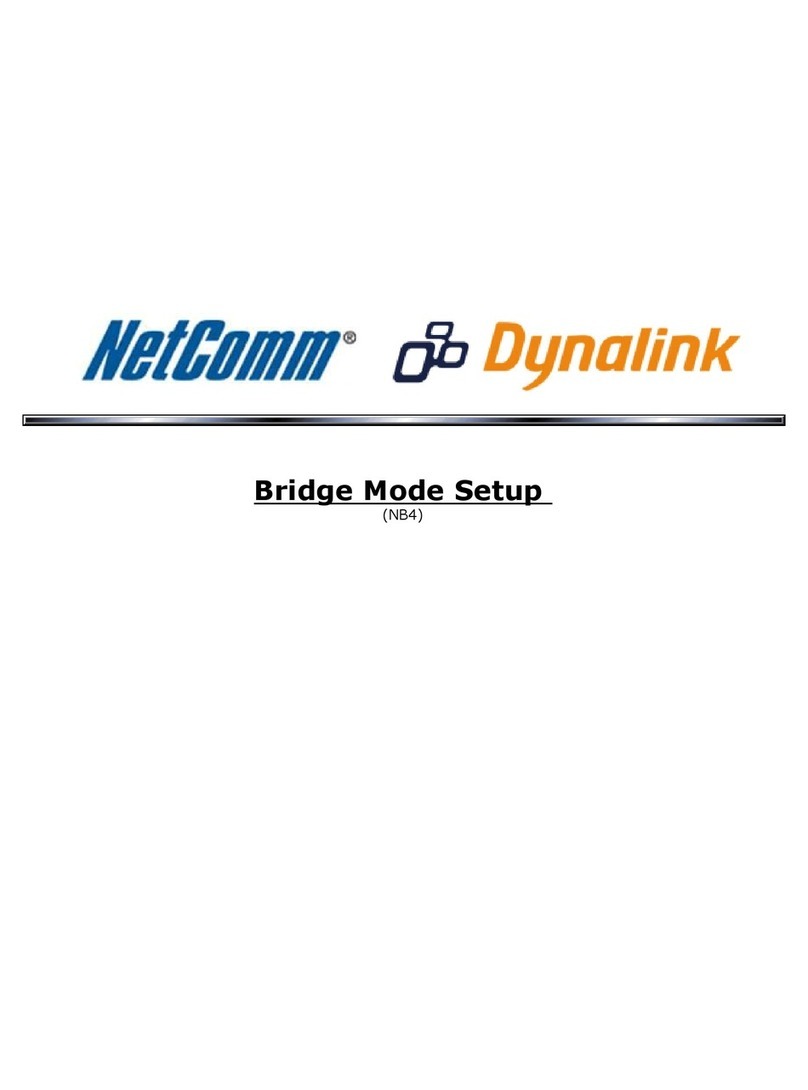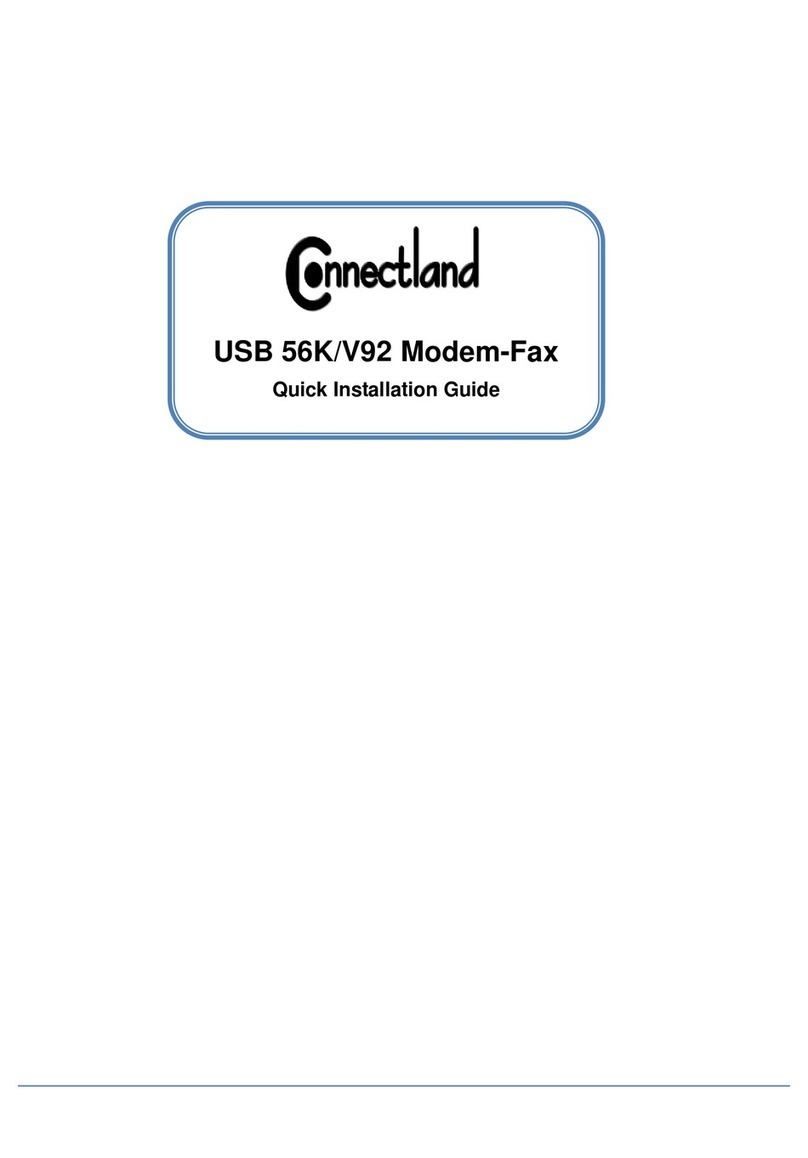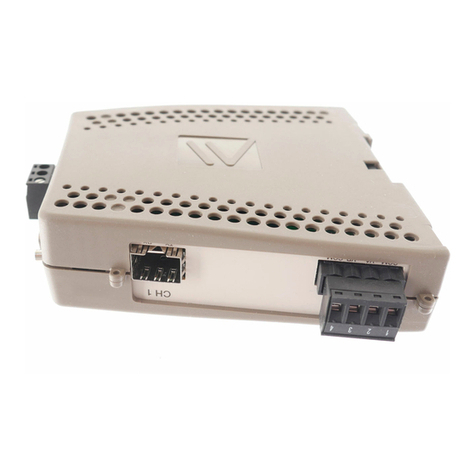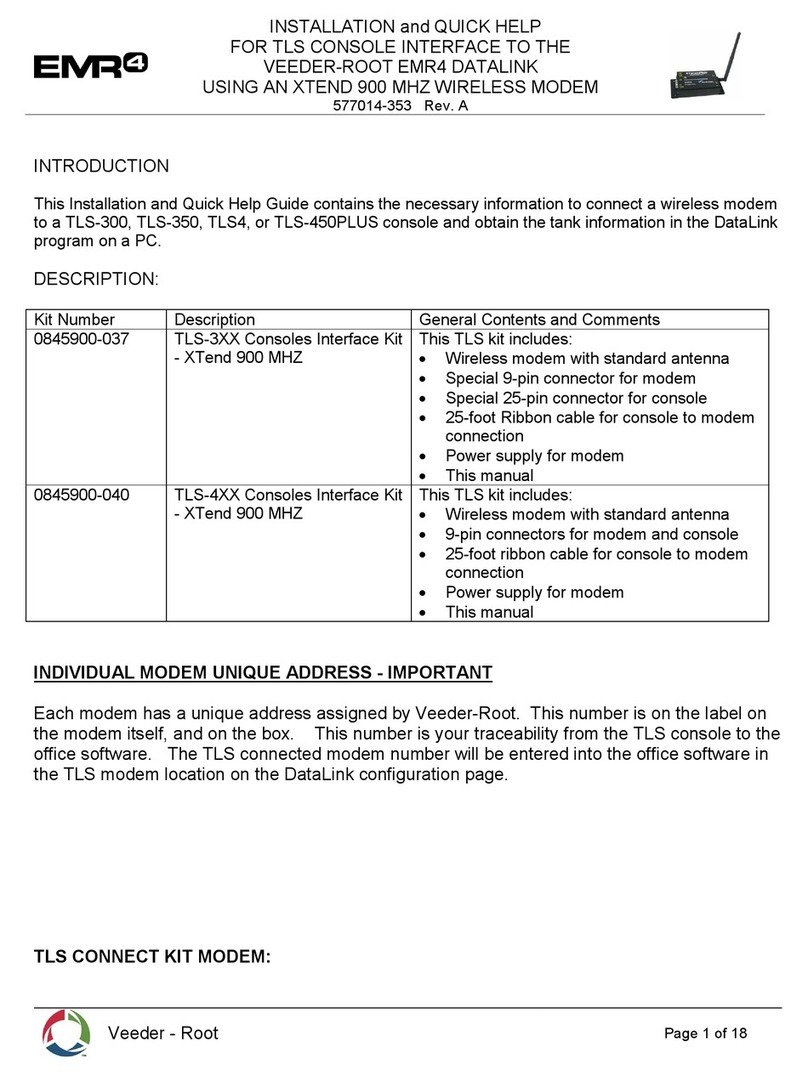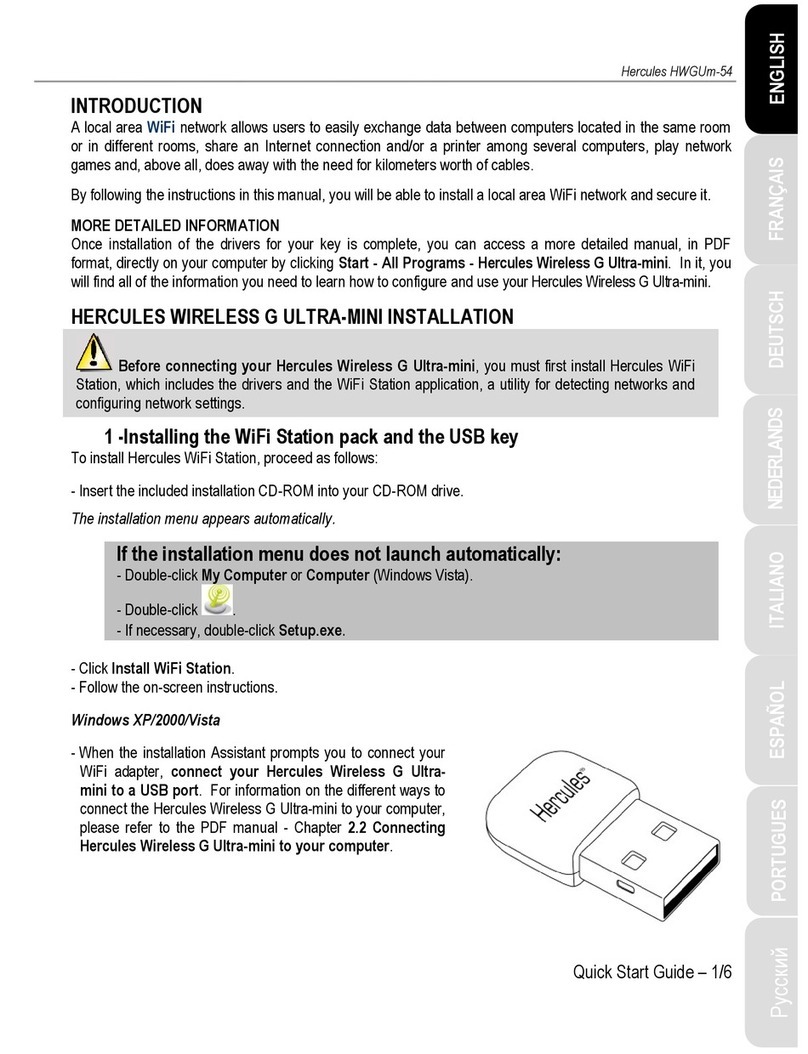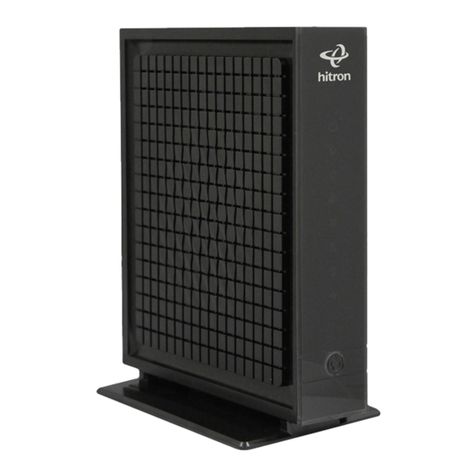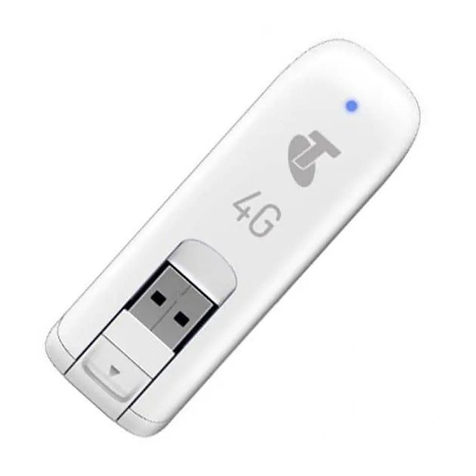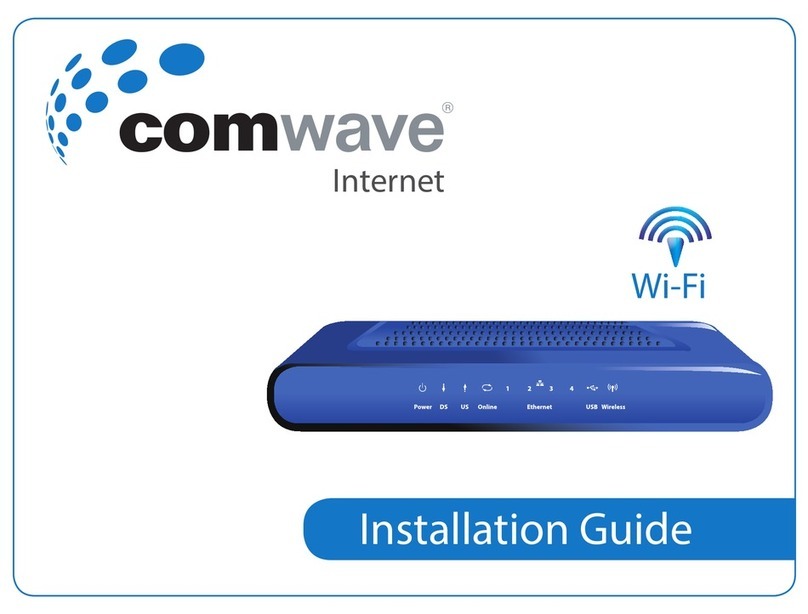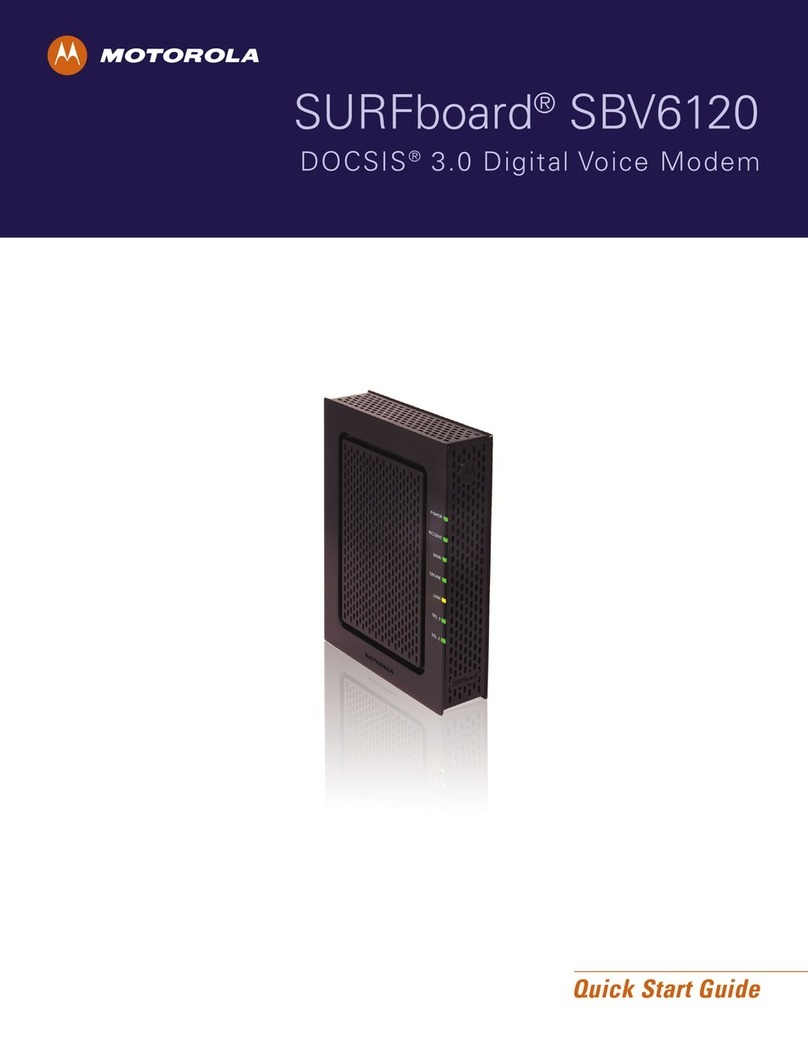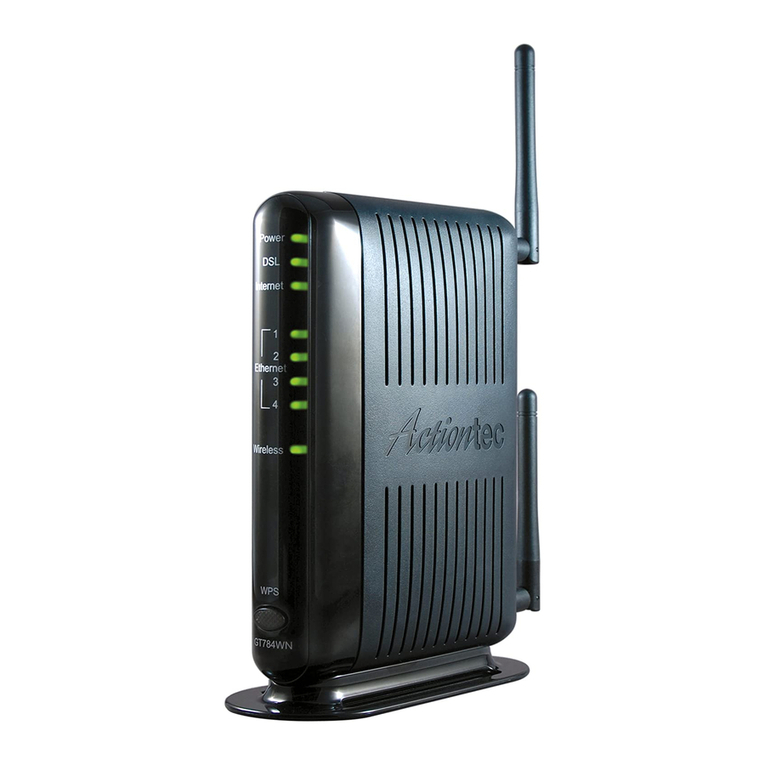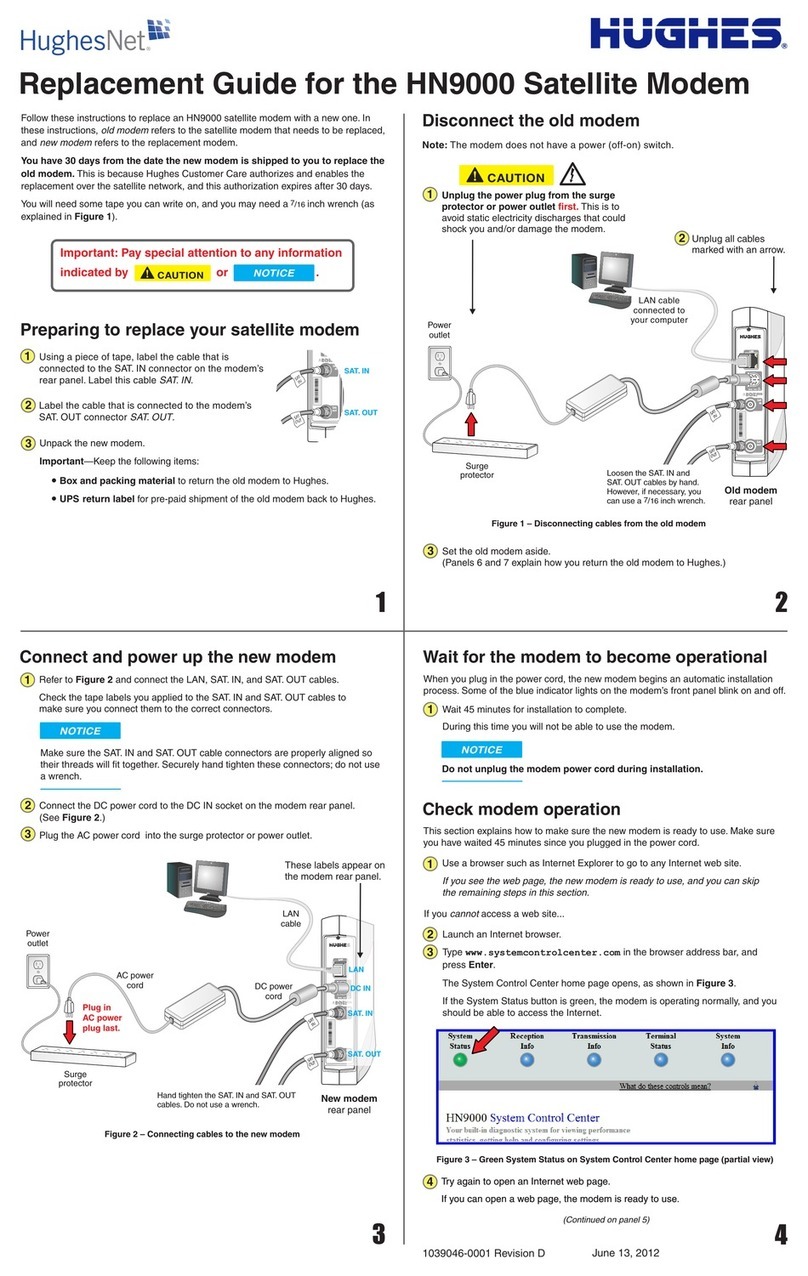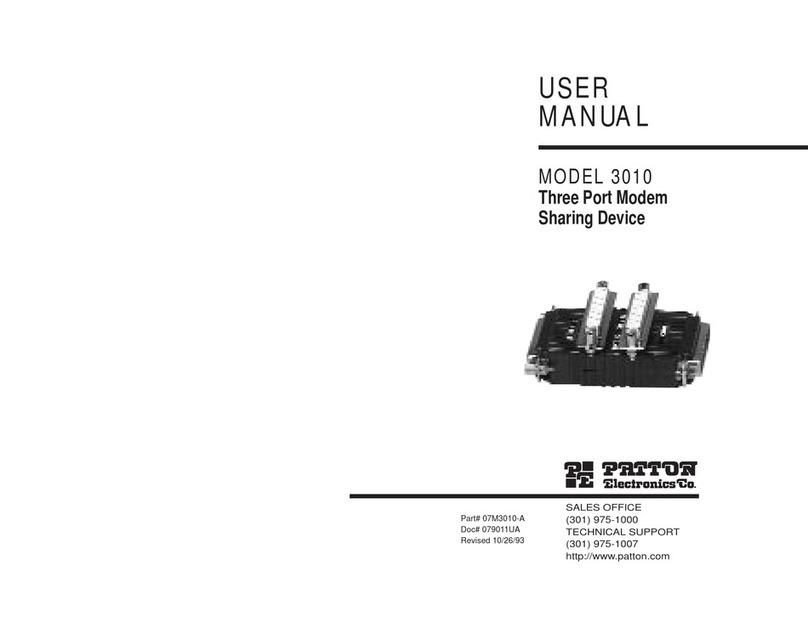insys icom MIRO User manual

Manual
Manual
MIRO / MIROdul
Installation and User Manual
icom Connectivity Suite
VPN and M2M SIM


Copyright © September 2021 INSYS MICROELECTRONICS GmbH
Any duplication of this manual is prohibited. All rights on this documentation and
the devices are with INSYS MICROELECTRONICS GmbH Regensburg.
Trademarks and logos
The use of a trademark or logo not shown below does not indicate that it is freely
available for use.
MNP is a registered trademark of Microcom Inc.
IBM PC, AT, XT are registered trademarks of International Business Machine Cor-
poration.
INSYS®, VCom®, e-Mobility LSG® and e-Mobility PLC® are registered trademarks of
INSYS MICROELECTRONICS GmbH.
Windows™ is a registered trademark of Microsoft Corporation.
Linux is a registered trademark of Linus Torvalds.
Publisher:
INSYS MICROELECTRONICS GmbH
Hermann-Köhl-Str. 22
93049 Regensburg
Phone: +49 941 58692 0
Fax: +49 941 58692 45
Internet: https://www.insys-icom.com
Date: Sep-21
Item: 10023203
Version: 1.0
Language: EN

Content
4
Sep-21
1Preface .................................................................................................. 6
1.1 Defects Liability Terms ........................................................................................ 6
1.2 Applicability ........................................................................................................ 6
1.3 Feedback ............................................................................................................ 6
1.4 Marking of Warnings and Notes.......................................................................... 7
1.5 Meaning of the Symbols and the Formatting in this Manual ................................ 8
2Security ................................................................................................. 9
2.1 Usage According to the Regulations ................................................................... 9
2.2 Permissible Technical Limits.............................................................................. 10
2.3 Responsibilities of the operator ......................................................................... 10
2.4 Qualification of the Personnel............................................................................ 10
2.5 Instructions for Transport and Storage .............................................................. 10
2.6 Markings on the Product................................................................................... 11
2.7 Protection of the Environment........................................................................... 11
2.8 Safety Instructions for Electrical Installation ...................................................... 12
2.9 General Safety Instructions................................................................................ 13
3Using Open Source Software ............................................................... 15
3.1 General Information .......................................................................................... 15
3.2 Special Liability Regulations .............................................................................. 16
3.3 Used Open-Source Software ............................................................................. 16
4Version History .................................................................................... 17
5Device Variants .................................................................................... 18
6Scope of Delivery................................................................................. 19
6.1 Technical Data .................................................................................................. 20
6.1.1 Physical Features.................................................................................... 20
6.1.2 Technological Features........................................................................... 21
6.2 Connections, display and control elements........................................................ 22
6.3 Digital input/output ........................................................................................... 24
6.4 Connecting the connectors ............................................................................... 24
6.5 Maximum line lengths....................................................................................... 24
6.6 Certifications ..................................................................................................... 24
6.7 Antennas........................................................................................................... 25
6.7.1 Outside mounted antenna...................................................................... 25
6.7.2Magnetic base antenna .......................................................................... 25

Contents
Sep-21 5
7Mounting ............................................................................................. 26
7.1 DIN rail mounting.............................................................................................. 27
7.1.1 DIN rail mounting with integrated adapter ............................................ 27
7.1.2 DIN rail mounting with accessory adapter............................................. 29
7.2 Screw mounting................................................................................................ 32
7.3 Connecting the power supply............................................................................ 34
8Commissioning .................................................................................... 35
9Operating Principle .............................................................................. 37
9.1 Operation via the web interface......................................................................... 37
9.2 Access via HTTPS Protocol................................................................................ 39
9.2.1 Authentication via the device-individual certificate/key combination .... 39
9.2.2 Authentication via an own certificate structure ..................................... 40
9.3 Profiles and Profile Handling ............................................................................. 41
9.3.1 Term definitions ..................................................................................... 41
9.3.2 Working with one profile........................................................................ 41
9.3.3 Using several profiles ............................................................................. 42
9.3.4 ASCII Configuration................................................................................ 43
10 Maintenance, Repair and Troubleshooting ........................................... 44
10.1 Maintenance ..................................................................................................... 44
10.2 Troubleshooting ................................................................................................ 44
10.3 Repair ............................................................................................................... 44
11 Waste Disposal .................................................................................... 45
11.1 Repurchasing of legacy systems ....................................................................... 45
12 Declaration of Conformity .................................................................... 46
13 FCC Statement..................................................................................... 47
14 Export Restriction ................................................................................ 48
15 Glossary............................................................................................... 49
16 Tables and Diagrams............................................................................ 53
16.1 List of Tables..................................................................................................... 53
16.2 List of Diagrams ................................................................................................ 53
17 Index.................................................................................................... 54

Preface
MIRO
6
1Preface
This manual allows for the safe and efficient use of the product. The manual is part
of the product and must always be stored accessible for installation, commission-
ing and operating personnel.
1.1 Defects Liability Terms
A usage not according to the intended purpose, an ignorance of this documenta-
tion, the use of insufficiently qualified personnel as well as unauthorised modifica-
tions exclude the liability of the manufacturer for damages resulting from this. The
liability of the manufacturer ceases to exist.
The regulations of our Delivery and Purchasing Conditions are effective. These can
be found on our website (www.insys-icom.com/imprint/) under “General Terms
and Conditions”.
1.2 Applicability
This manual applies to the product with latest hardware and firmware revision at
the time of publication.
1.3 Feedback
We are permanently improving our products and the associated technical docu-
mentation. Your feedback is very helpful for this. Please tell us what you like in par-
ticular on our products and publications and what can be improved from your point
of view. We highly appreciate your suggestions and will include them in our work
to support you and all our customers. We are looking forward to any of your feed-
back.
We'd like to know your applications. Please send us a few headwords that we
know the applications you solve using products of INSYS icom.

MIRO
Preface
7
1.4 Marking of Warnings and Notes
Symbols and Key Words
Danger!
Risk of severe or fatal injury
One of this symbols in conjunction with the key word
Danger indicates an imminent danger. It will cause death
or severe injuries if not avoided.
Warning!
Risk of severe or fatal injury possible
This symbol in conjunction with the key word Warning
indicates a possibly hazardous situation. It might cause
death or severe injuries if not avoid.
Caution!
Slight injury and / or material damage
This symbol in conjunction with the key word Caution
indicates a possibly hazardous or harmful situation. It
might cause slight or minor injuries or a damage of the
product or something in its vicinity if not avoided.
Note
Improvement of the application
This symbol in conjunction with the key word Note
indicates hints for the user or very useful information. This
information helps with installation, set-up and operation of
the product to ensure a fault-free operation.

Preface
MIRO
8
1.5 Meaning of the Symbols and the Formatting in this
Manual
This section describes the definition, formatting and symbols used in this manual.
The various symbols are meant to help you read and find the information relevant
to you. The following text is structured like a typical operating instruction of this
manual.
Bold print: The objective. This will tell you what the following steps will result in
After that, there will be a detailed explanation why you could perform the
following steps to be able to reach the objective indicated first. You can
decide whether the section is relevant for you or not.
An arrow will indicate prerequisites which must be fulfilled to be able to
process the subsequent steps in a meaningful way. You will also learn
which software or which equipment you will need.
1. One individual action step: This tells you what you need to do at this
point. The steps are numbered for better orientation.
A result which you will receive after performing a step will be marked
with a check mark. At this point, you can check if the previous steps
were successful.
Additional information which you should consider are marked with a
circled "i". At this point, we will indicate possible error sources and tell
you how to avoid them.
➢
Alternative results and steps are marked with an arrow. This will tell
you how to reach the same results performing different steps, or what
you could do if you didn't reach the expected results at this point.

MIRO
Security
9
2Security
The Safety section provides an overview about the safety instructions, which must
be observed for the operation of the product.
The product is constructed according to the currently valid state-of-the-art technol-
ogy and reliable in operation. It has been checked and left the factory in flawless
condition concerning safety. In order to maintain this condition during the service
life, the instructions of the valid publications and certificates must be observed and
followed.
It is necessary to adhere to the general safety instructions must when operating the
product. The descriptions of processes and operation procedures are provided with
precise safety instructions in the respective sections in addition to the general
safety instructions.
Moreover, the local accident prevention regulations and general safety regulations
for the operating conditions of the device are effective.
An optimum protection of the personnel and the environment from hazards as well
as a safe and fault-free operation of the product is only possible if all safety instruc-
tions are observed.
2.1 Usage According to the Regulations
The product may be used for the following purposes:
Usage and installation in an industrial cabinet
Switching and data transmission functions in machines according to
the machine directive 2006/42/EC.
Usage as data transmission device for a PLC.
The product may not be used for the following purposes and used or operated un-
der the following conditions:
•Controlling or switching of machines and systems, which do not
comply with the directive 2006/42/EC.
•Usage, controlling, switching and data transmission of machines and
systems, which are operated in explosive atmospheres.
•Controlling, switching and data transmission of machines, which may
involve risks to life and limb due to their functions or when a
breakdown occurs.

Security
MIRO
10
2.2 Permissible Technical Limits
The product is only intended for the use within the permissible technical limits
specified in the data sheets.
The following permissible limits must be observed:
The ambient temperature limits must not be fallen below or
exceeded.
The supply voltage range must not be fallen below or exceeded.
The maximum humidity must not be exceeded and condensate
formation must be prevented.
The maximum switching voltage and the maximum switching current
load must not be exceeded.
The maximum input voltage and the maximum input current must not
be exceeded.
2.3 Responsibilities of the operator
As a matter of principle, the operator must observe the legal regulations, which are
valid in his country, concerning operation, functional test, repair and maintenance
of electrical devices.
2.4 Qualification of the Personnel
The installation, commissioning and maintenance of the product must only be per-
formed by trained expert personnel, which has been authorised by the plant opera-
tor. The expert personnel must have read and understood this documentation and
observe the instructions.
Only a person, who is able to work on electrical installations and identify and avoid
possible hazards independently, based on professional training, knowledge and ex-
perience as well as knowledge of the relevant standards and regulations is permit-
ted to carry out the electrical connection and commissioning of the product.
2.5 Instructions for Transport and Storage
The following instructions must be observed:
Do not expose the product to moisture and other potential hazardous
environmental conditions (radiation, gases, etc.) during transport and
storage. Pack product accordingly.
Pack product sufficiently to protect it against shocks during transport
and storage, e.g. using air-cushioned packing material.
Check product for possible damages, which might have been caused by improper
transport and storage, before installation. Transport damages must be noted down
to the shipping documents. All claims or damages must be filed immediately and
before installation against the carrier or party responsible for the storage.

MIRO
Security
11
2.6 Markings on the Product
The identification plate of the product is either a print or a label on a face of the
product. Amongst other things, it can contain the following markings, which are
explained in detail here.
Observe manual
This symbol indicates that the manual of the product contains
essential safety instructions that must be followed implicitly.
Dispose waste electronic equipment environmentally
compatible
This symbol indicates that waste electronic equipment must be
disposed separately from residual waste via appropriate collecting
points. See also Section Disposal in this manual.
CE marking
By applying a CE marking, the manufacturer confirms that the
product complies with the European directives that apply product-
specific.
UL marking
By applying a UL marking, the manufacturer confirms that the
product complies with the obligatory safety requirements.
Appliance Class II - double insulated
This symbol indicates that the product complies with Appliance
Class II
Appliance Class III - protection by extra low voltage
This symbol indicates that the product complies with Appliance
Class III
2.7 Protection of the Environment
Dispose the product and the packaging according to the relevant environmental
protection regulation. The Waste Disposal section in this manual contains notes
about disposing the product. Separate the packaging components of cardboard
and paper as well as plastic and deliver them to the respective collection systems
for recycling.

Security
MIRO
12
2.8 Safety Instructions for Electrical Installation
The electrical connection must only be made by authorised expert personnel ac-
cording to the wiring diagrams.
The notes to the electrical connection in the manual must be observed. Otherwise,
the protection category might be affected.
The safe disconnection of circuits, which are hazardous when touched, is only en-
sured if the connected devices meet the requirements of VDE 0106 T.101 (Basic re-
quirements for safe disconnection).
The supply lines are to be routed apart from circuits, which are hazardous when
touched, or isolated additionally for a safe disconnection.
An easily accessible, fixed installed cut-off device must be installed prior to com-
missioning to be able to isolate the device from power supply completely (all
poles).

MIRO
Security
13
2.9 General Safety Instructions
Caution!
Electrostatic discharges may damage the product!
Damage of the product.
Observe the general safety precautions when handling
electrostatic-discharge-sensitive parts.
Caution!
Incomplete voltage isolation!
Damage of the product.
To isolate the voltage from the device, disconnect any
supply circuit with its respective isolation device if a
redundant power supply is used.
Caution!
Overcurrent of the device supply!
Fire hazard and damage of the product due to overcurrent.
The product must be secured with a suitable fuse against
currents exceeding 6.3 A. It must be ensured that the fuse
will only be replaced by a fuse with the same rating in case
it needs to be replaced.
Caution!
Moisture and liquids from the environment may seep into
the interior of the product!
Fire hazard and damage of the product.
The product must not be used in wet or damp
environments, or in the direct vicinity of water. Install the
product at a dry location, protected from water spray.
Disconnect the power supply before you perform any work
on a device which may have been in contact with
moisture.

Security
MIRO
14
Caution!
Short circuits and damage due to improper repairs and
modifications as well as opening of maintenance areas!
Fire hazard and damage of the product.
It is not permitted to open the product for repair or
modification.
Caution!
Overvoltage and voltage peaks from the mains supply!
Fire hazard and damage of the product due to overvoltage.
Install suitable overvoltage protection.
Caution!
Damage due to chemicals!
Ketones and chlorinated hydrocarbons dissolve the plastic
housing and damage the surface of the device.
Never let the device come into contact with ketones (e.g.
acetone) or chlorinated hydrocarbons, such as
dichloromethane.
Caution!
Distance from antennas to persons!
A too low distance from cellular antennas to persons can
affect the health.
Please observe to keep a minimum distance of 20 cm
between the cellular antenna and persons during
operation.

MIRO
Using Open Source Software
15
3Using Open Source Software
3.1 General Information
Our product MIRO contains, amongst others, so-called open-source software that
is provided by third parties and has been published for free public use. The open-
source software is subject to special open-source software licenses and the copy-
right of third parties. Basically, each customer can use the open-source software
freely in compliance with the licensing terms of the respective producers. The
rights of the customer to use the open-source software beyond the purpose of our
product are regulated in detail by the respective concerned open-source software
licenses. The customer use the open-source software freely, as provided in the re-
spective effective license, beyond the purpose that the open-source software gets
in our product. In case there is a contradiction between the licensing terms for our
product and the respective open-source software license, the respective relevant
open-source software license takes priority over our licensing terms, as far as the
respective open-source software is concerned by this.
The use of the used open-source software is possible free of charge. We do not de-
mand usage fees or any comparable fees for the use of the open-source software
contained in our product. The use of the open-source software in our product by
the customer is not part of the earnings we achieve with the contractual compen-
sation.
All open-source software programs contained in our product can be taken from the
available list. The most important open-source software licenses are listed in the Li-
censes section at the end of this publication.
As far as programs contained in our product are subject to the GNU General Public
License (GPL), GNU Lesser General Public License (LGPL), Clarified Artistic License
or another open-source software license, which regulates that the source code must
be made available, and if this software is not already delivered in source code on a
data carrier with our product, we will send you this at any time upon request. If it is
required to send this on a data carrier, the sending will be made against payment of a
cost compensation of € 10,00. Our offer to send the source code upon request
ceases automatically 3 years after delivery of our product to the customer. Requests
must be directed to the following address, if possible under specification of the serial
number:
INSYS MICROELECTRONICS GmbH
Hermann-Köhl-Str. 22
93049 Regensburg
Phone +49 941 58692 0
Fax +49 941 58692 45

Using Open Source Software
MIRO
16
3.2 Special Liability Regulations
We do not assume any warranty or liability, if the open-source software programs
contained in our product are used by the customer in a manner that does not com-
ply any more with the purpose of the contract, which is the basis of the acquisition
of our product. This concerns in particular any use of the open-source software
programs outside of our product. The warranty and liability regulations that are pro-
vided by the respective effective open-source software license for the respective
open-source software as listed in the following are effective for the use of the
open-source software beyond the purpose of the contract. In particular, we are not
liable, if the open-source software in our product or the complete software configu-
ration in our product is changed. The warranty granted with the contract, which is
the basis of the acquisition of our product., is only effective for the unchanged
open-source software and the unchanged software configuration in our product.
3.3 Used Open-Source Software
Please contact our support department (support@insys-icom.de) for a list of the
open-source software used in this product. Alternatively, you’ll find a list of the
open-source software in the web interface of the router under Help -> Licences.

MIRO
Version History
17
4Version History
Version
Modification
1.0
Release

Device Variants
MIRO
18
5Device Variants
This manual describes different variants of the industrial router MIRO and the in-
dustrial router module MIROdul of INSYS icom. The routers are referred to as MIRO
or MIROdul in this manual. These are:
•MIRO-L100 (router with cellular frequency bands for Europe, Middle East,
Africa and partly Asia-Pacific region, Australia and South America)
•MIRO-L110 (router with cellular frequency bands for North America)
•MIROdul-L100 ( router module with cellular frequency bands for, Middle
East, Africa and partly Asia-Pacific region, Australia and South America)
•MIRO-L110 (router module with cellular frequency bands for North
America)
If the routers are different, this will be mentioned explicitly in the respective sec-
tions.
Please check which cellular frequency bands are available in the
planned area of operation.

MIRO
Scope of Delivery
19
6Scope of Delivery
The scope of delivery includes all accessories listed below. Please check if all
accessories are included in the box. If a part is missing or damaged, please contact
your distributor.
•Industrial Routers
•Quick Installation Guide (MIRO only, 1 per packing unit)
•Safety Warnings (MIRO only, 1 per packing unit)
The scope of delivery does not include optional accessories. Among other things,
the following parts are available from your distributor or INSYS icom:
•Cellular antennas
•Antenna extensions
•Power supply units
•VPN service
icom Connectivity Suite - VPN
•M2M SIM card and management portal
icom Connectivity Suite - M2M SIM
•Central device management for certificates, updates and configurations
icom Router Management
The following information applies to all variants of the router. If these variants dif-
fer, the different values will be indicated separately.

Scope of Delivery
MIRO
20
6.1 Technical Data
6.1.1 Physical Features
All specified data was measured with nominal input voltage, at full load, and an
ambient temperature of 25 °C. The limit value tolerances are subject to the usual
variations.
Physical Feature
Value
Operating voltage
12 V … 24 V DC (±20%)
Max. power of power supply
< 4 kW
Power consumption
Typ. 1.5 W, max. 5 W
Level digital input
Level HIGH = 2 … 24 V
Level LOW = 0 … 1 V
Contact open condition: HIGH
Current consumption digital input at
LOW potential
Typ. 3 mA when connecting to GND
Digital output (open collector), max.
load
24 V (DC), 50 mA
Max. voltage drop of the output in ON
condition
< 1 V (DC) at 50 mA load
Max. transmission power cellular engine
MIRO-L100:
EGSM 900
GSM 1800
UMTS 900/2100
LTE 800/850/900/1800/2100/2600
MIRO-L110:
UMTS 850/1900/2100
LTE 700/1700/1900
+33 dBm
+30 dBm
+24 dBm
+23 dBm
+24 dBm
+23 dBm
Weight
95 g (MIRO)
40 g (MIROdul)
Dimensions (width x height x depth)
Depth on DIN rail
Horizontal pitch on DIN rail
26 mm x 77 mm x 99 mm (MIRO)
82 mm x 70 mm x 17 mm (MIROdul)
92 mm (MIRO)
1.5 TE (MIRO)
Temperature range
-40 °C … 70 °C
Maximum permissible humidity
95% non-condensing
IP rating(MIRO only)
Housing IP40
Environmental conditions (MIRO only)
Vibration/shock as per SPS standard
EN 61131-2 and EN 60068-2-6, EN
60068-2-27
Temperature tests as per EN 60068-
2-1, EN 60068-2-2, EN 60068-2-14,
EN 60068-2-30
This manual suits for next models
1
Table of contents
Other insys icom Modem manuals
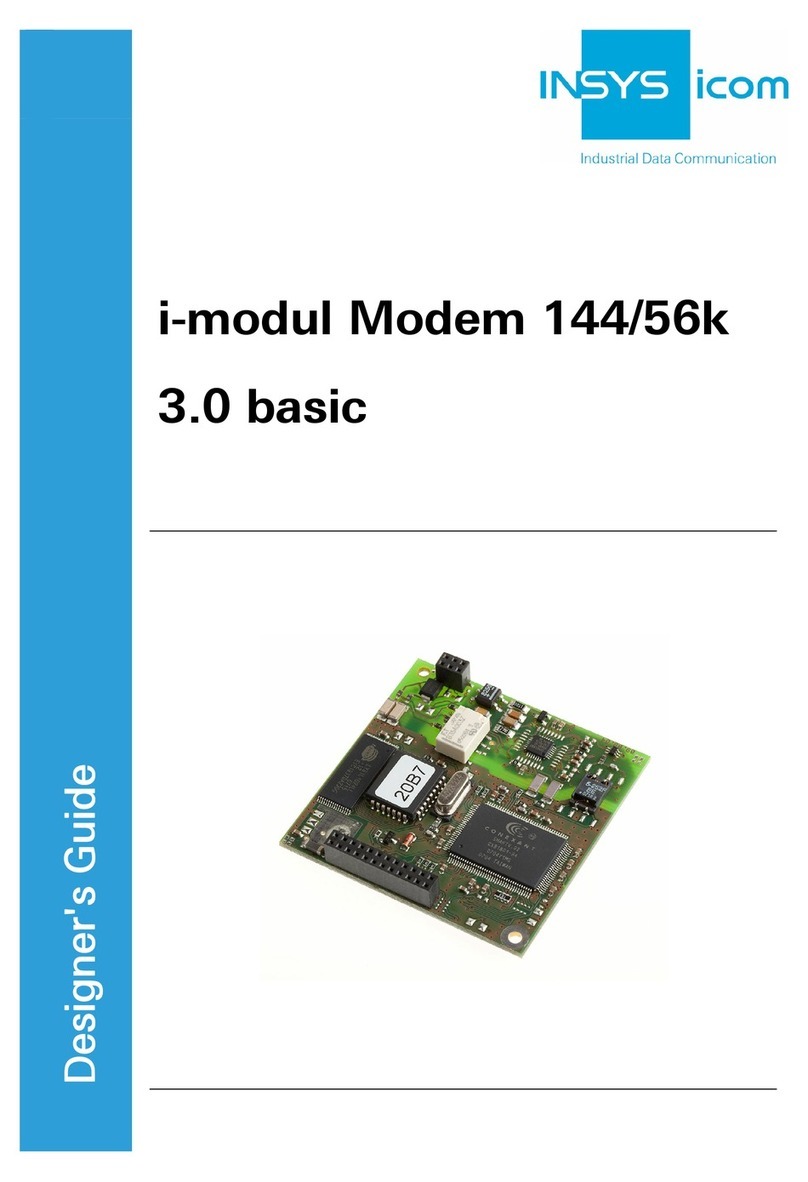
insys icom
insys icom i-modul 144/56k User manual
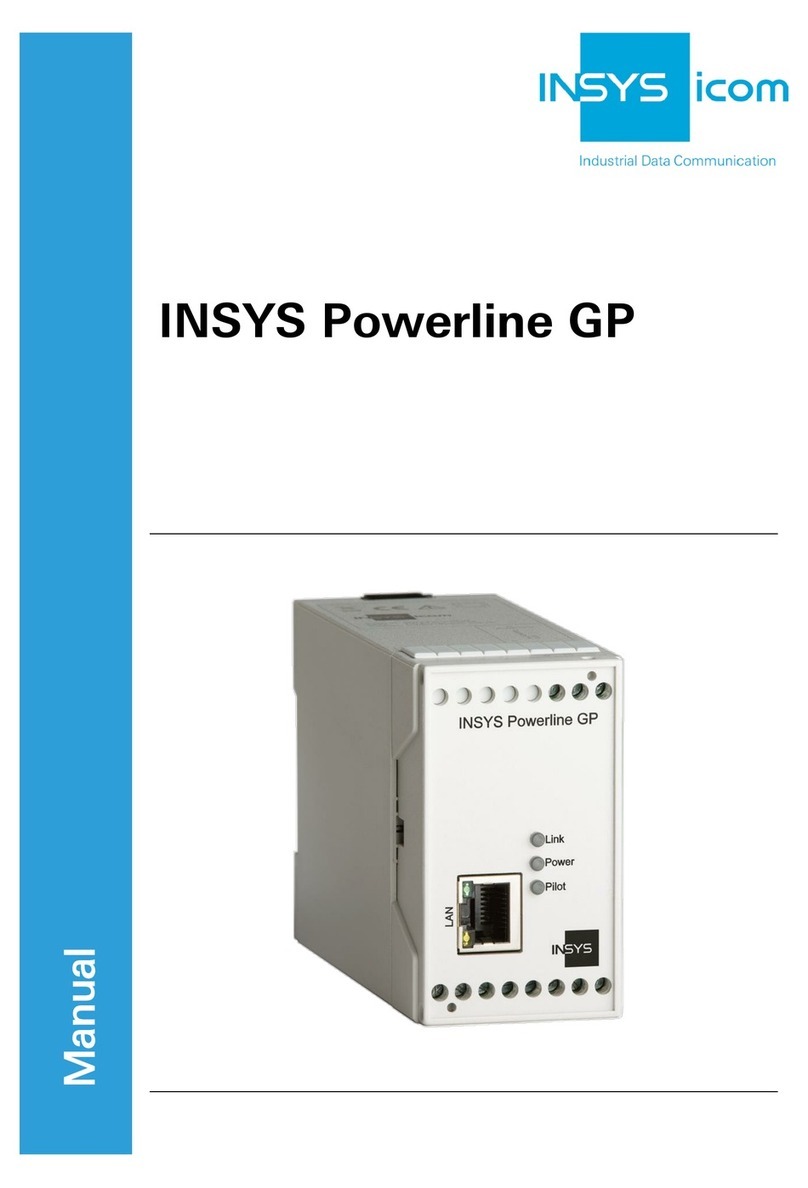
insys icom
insys icom Powerline GP User manual
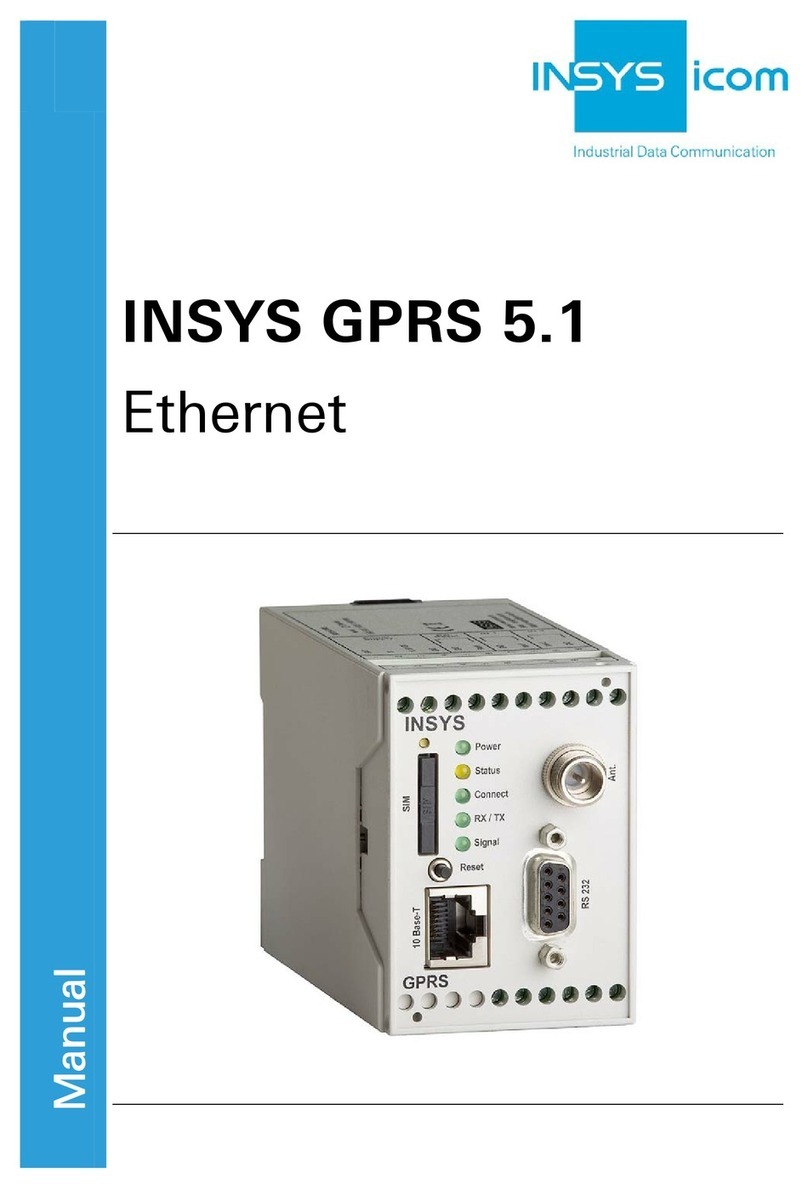
insys icom
insys icom GPRS 5.1 User manual

insys icom
insys icom i-modul 336 LL User manual
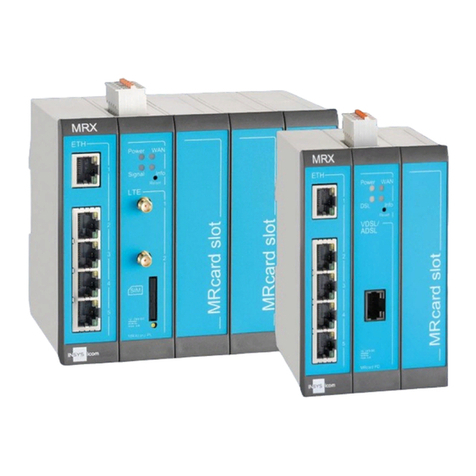
insys icom
insys icom MRX User manual
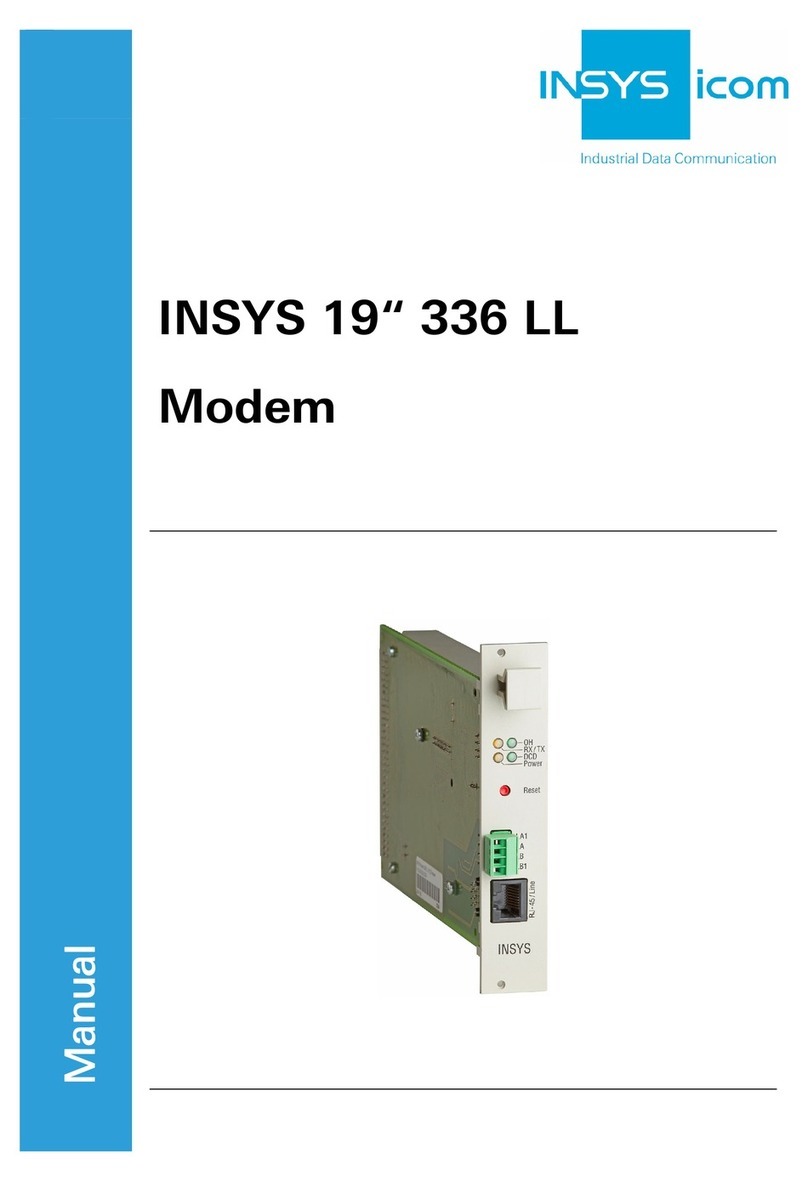
insys icom
insys icom i-modul 336 LL User manual
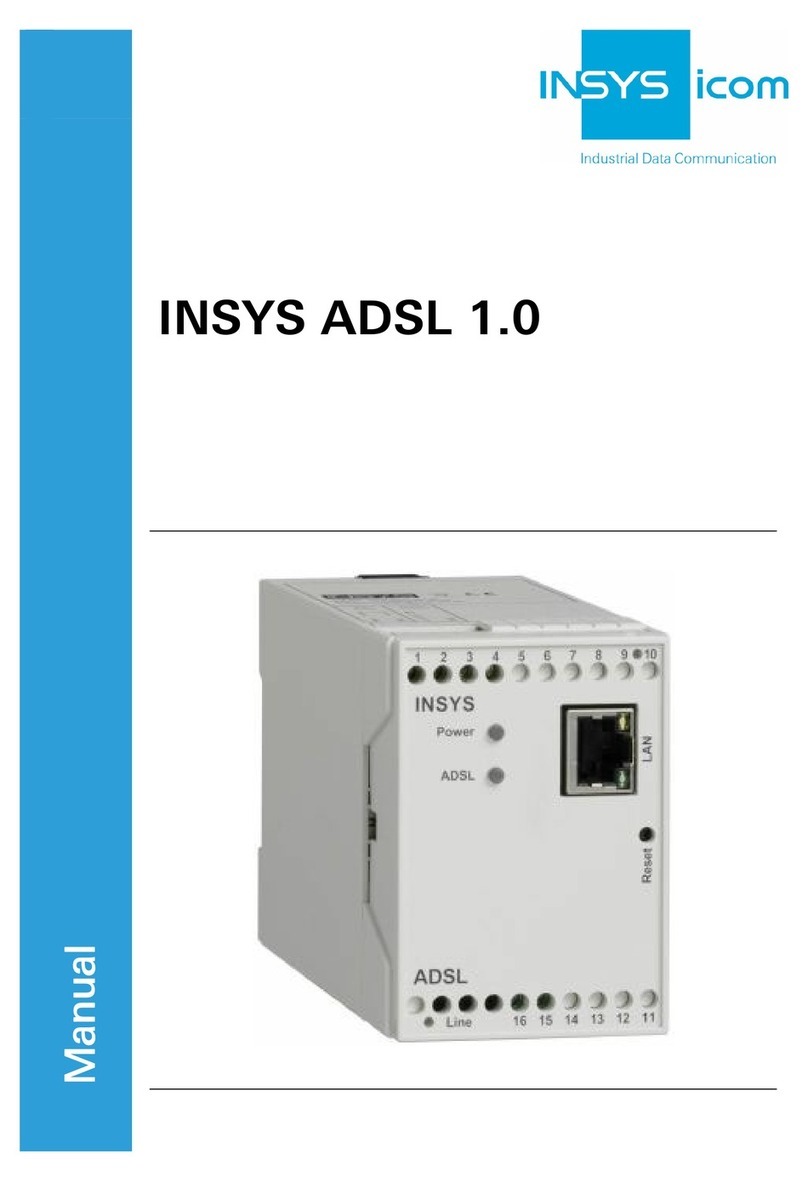
insys icom
insys icom ADSL 1.0 Series User manual
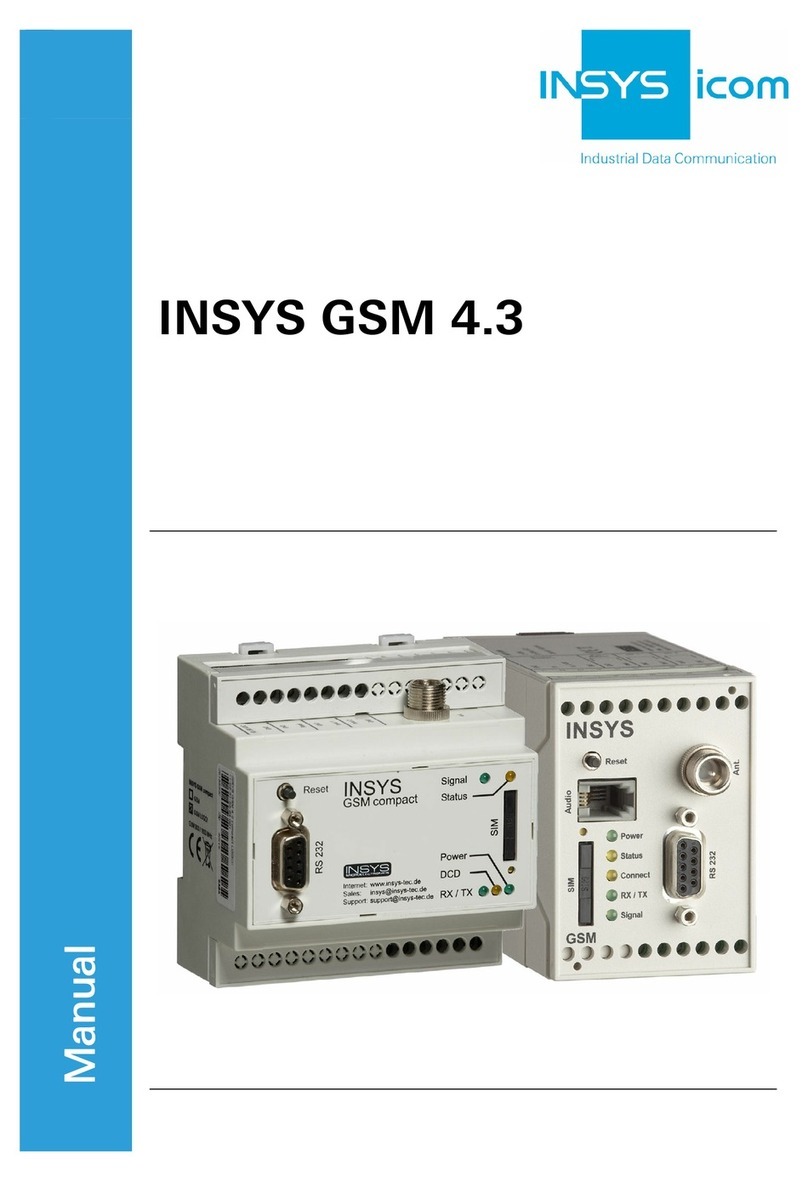
insys icom
insys icom GSM 4.3 compact User manual

insys icom
insys icom i-modul 336 LL User manual
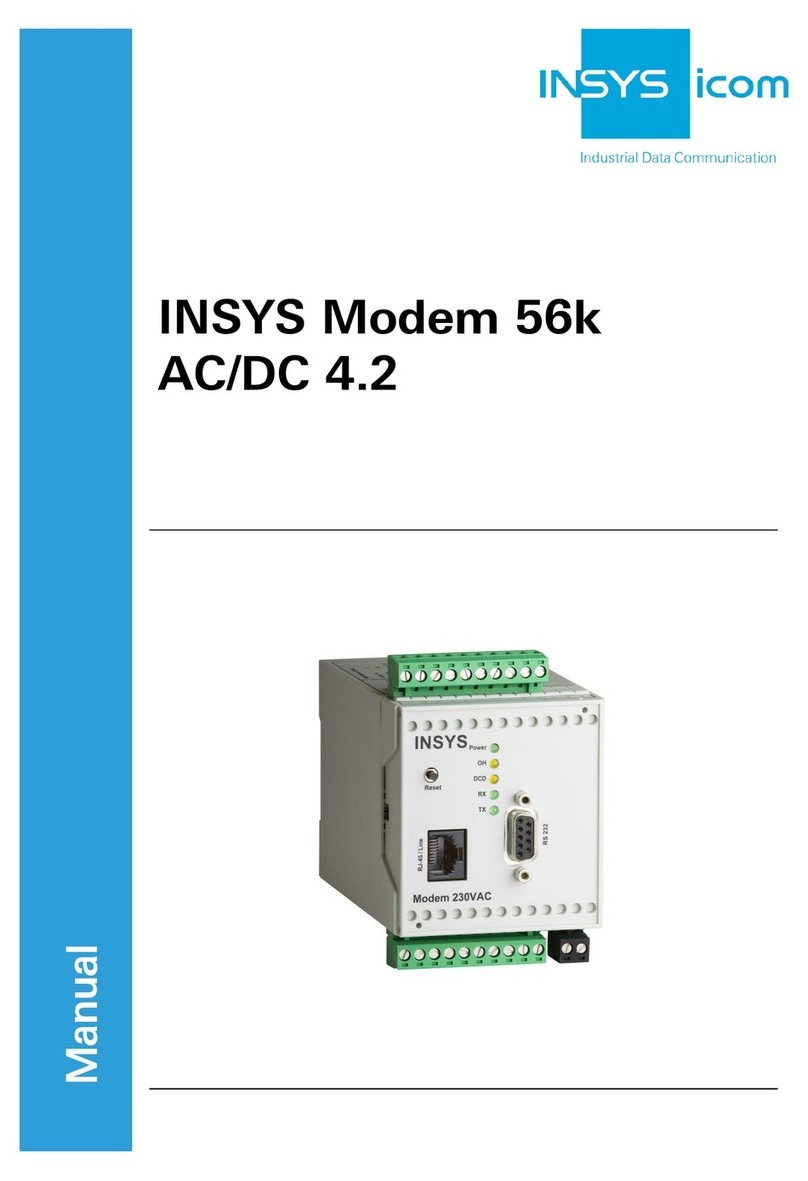
insys icom
insys icom 56k User manual
